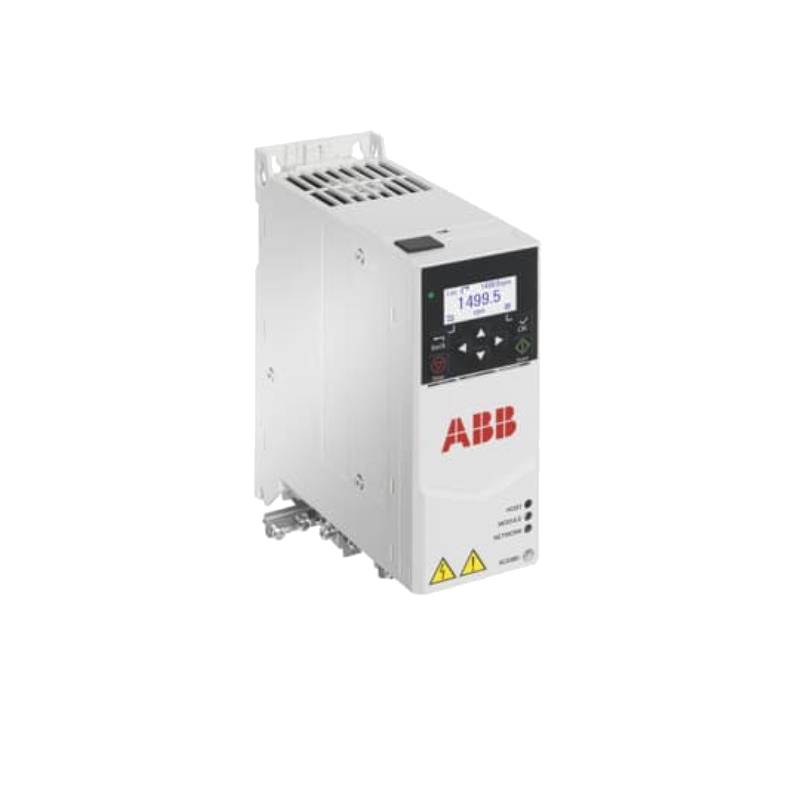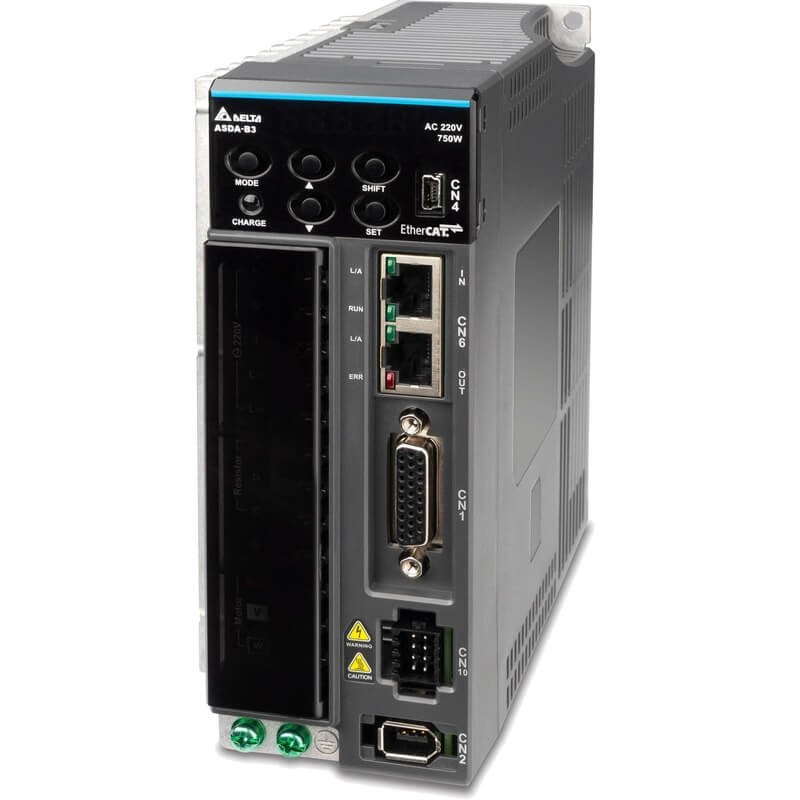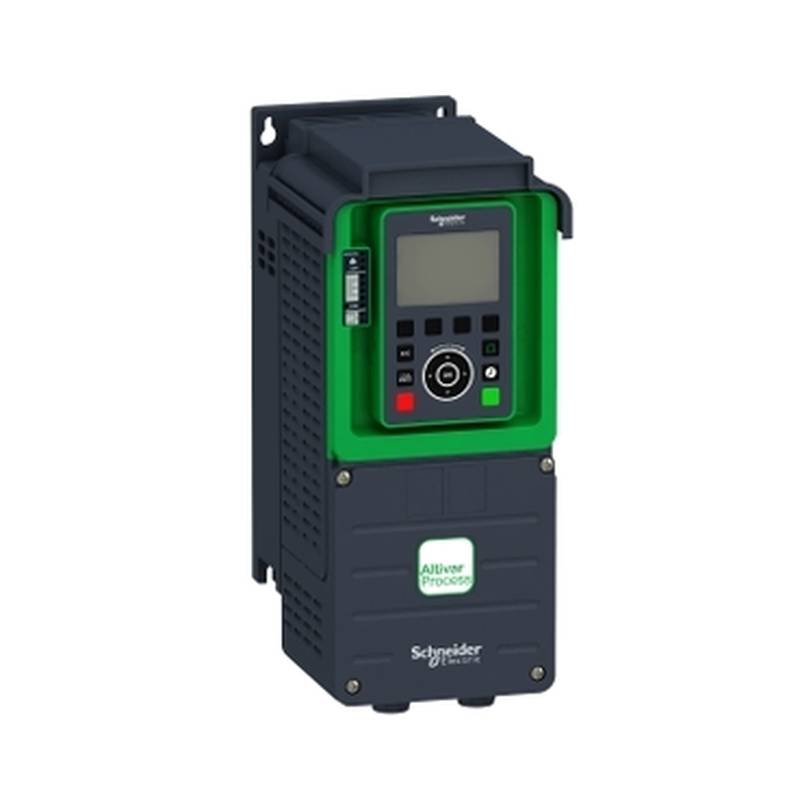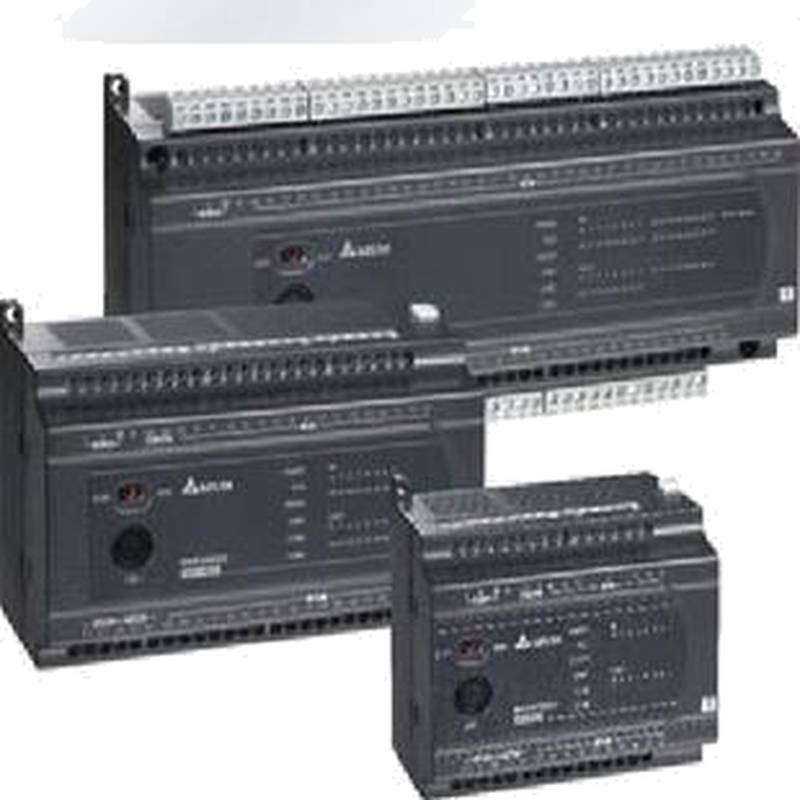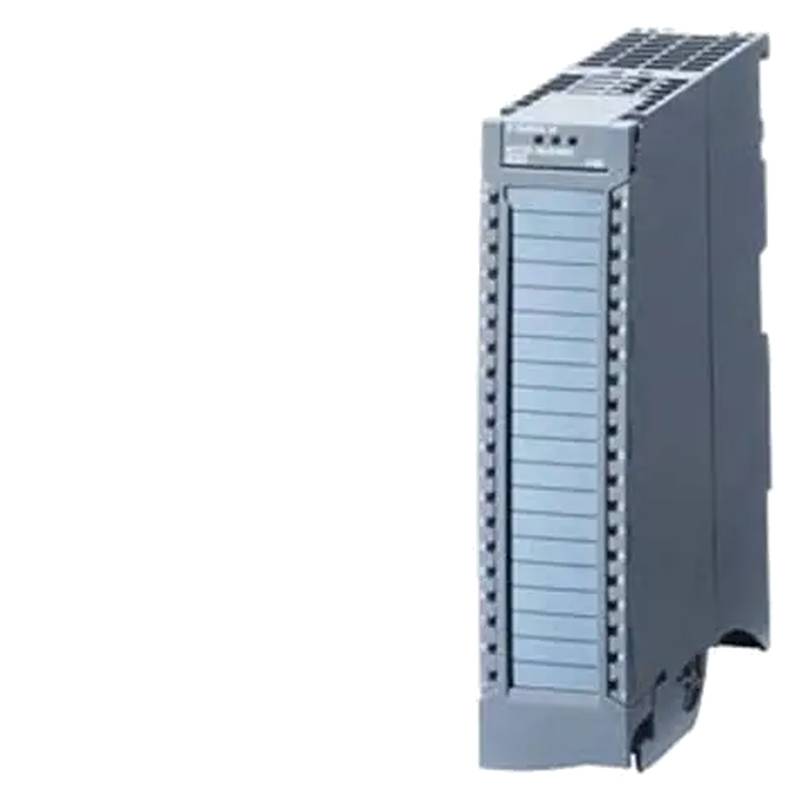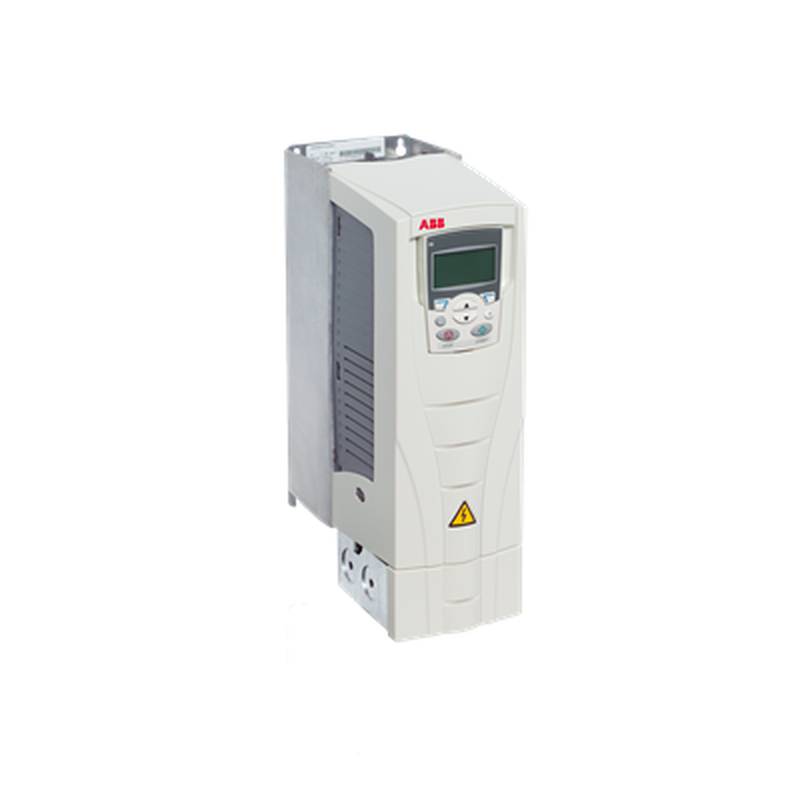
The ABB ACS355-03E-01A2-4 is a compact, variable frequency drive engineered for precise motor control in small fan applications, offering robust performance and energy efficiency. This 1.2A, 0.37kW drive excels in demanding environments due to its built-in features, including a robust IP20 enclosure for reliable operation and a user-friendly interface for straightforward setup. Its compact footprint and adaptable mounting options make it an ideal choice for space-constrained installations.
Product Specifications
| Parameter | Specification |
| :----------------- | :----------------------------------------------- |
| Model | ACS355-03E-01A2-4 |
| Current Rating | 1.2 A |
| Power Rating | 0.37 kW (0.5 HP) |
| Voltage | 380-480 V AC (3-phase input) |
| Enclosure | IP20 |
| Control Method | V/Hz, Flux Vector Control |
| Dimensions (H x W x D) | 240 mm x 120 mm x 137 mm |
| Mounting | Wall or DIN rail |
| Ambient Temperature | -10°C to 50°C (derating may apply) |
| Altitude | Up to 1000 m without derating |
Core Features & Market Positioning
The ABB ACS355-03E-01A2-4 distinguishes itself in the market through its inherent robustness and optimized design for fan control. Its integral safety features, such as safe torque off (STO), enhance operational security, a critical consideration in industrial settings. The drive's advanced control algorithms ensure smooth acceleration and deceleration, minimizing mechanical stress on fan systems and extending equipment lifespan. This focus on reliability and integrated safety positions the ACS355 as a premium solution for applications demanding dependable and efficient performance. The drive's ability to deliver precise speed control directly translates to significant energy savings by matching fan output to actual demand, a key differentiator for environmentally conscious and cost-sensitive operations.
Key Application Scenarios
This compact variable frequency drive is exceptionally well-suited for a variety of small fan control applications across diverse industrial sectors. It is commonly deployed in building automation systems for HVAC (Heating, Ventilation, and Air Conditioning) units, controlling supply and exhaust fans to maintain optimal indoor air quality and thermal comfort. In manufacturing environments, the ACS355 is utilized for process ventilation, cooling fans in machinery, and dust extraction systems, ensuring efficient airflow and operational safety. Its precise speed regulation also makes it ideal for specialized applications such as laboratory fume hoods and cleanroom ventilation, where consistent airflow is paramount.
Practical System Integration Guidance
Integrating the ABB ACS355-03E-01A2-4 into existing systems is facilitated by its straightforward wiring and programming capabilities. For power connections, ensure the main power supply (380-480V, 3-phase) is correctly connected to the L1, L2, L3 terminals, and the motor is wired to T1, T2, T3. The control terminals offer flexibility for external start/stop commands, speed reference signals (e.g., 0-10V or 4-20mA), and digital inputs for various functions. Basic parameter setup involves configuring motor data (e.g., nominal voltage, current, frequency, speed) and selecting the appropriate control mode (V/Hz or Flux Vector). Commissioning typically involves a motor auto-tune function to optimize performance for the connected motor.
Operation and Risk Mitigation
Operating the ABB ACS355-03E-01A2-4 requires adherence to safety protocols to mitigate risks. Always ensure the drive is de-energized before performing any wiring or maintenance. The Safe Torque Off (STO) function is a critical safety feature that must be correctly implemented in the control system to prevent unexpected motor restarts. Common troubleshooting may involve checking for fault codes displayed on the HMI; for instance, a "F101 Overcurrent" fault typically indicates the motor is drawing too much current, which could be due to a short circuit, motor overload, or incorrect parameter settings. Always consult the drive's manual for detailed fault code explanations and corrective actions.
Scalability & Long-Term Value
While the ACS355-03E-01A2-4 is a standalone unit, its integration into larger ABB ecosystems offers a path for scalability. It can be networked with other ABB drives and control systems using optional communication modules (e.g., Modbus, Profibus) for centralized monitoring and control, supporting IIoT integration. This compatibility allows for seamless expansion of control capabilities as application demands grow. The inherent energy-saving benefits of variable speed control provide long-term value by reducing electricity consumption and operational costs. Furthermore, ABB's robust product design and readily available technical support ensure the longevity and reliable performance of the ACS355 drive throughout its operational life.
Frequently Asked Questions
Q1: What is the maximum ambient temperature for the ABB ACS355-03E-01A2-4?
The drive can operate within an ambient temperature range of -10°C to 50°C.
However, operation at the higher end of this range may necessitate derating of the drive's current capacity.
It's crucial to consult the product manual for specific derating curves to ensure reliable performance.
Q2: How do I connect a 0-10V analog signal for speed control?
Connect the 0-10V signal source to the AI1 terminal and the common ground to the AIG terminal.
Ensure parameter 1202 is set to "AI1" to select the analog input as the speed reference source.
Verify the signal voltage and polarity for accurate speed command interpretation by the drive.
Q3: What does the F101 fault code indicate on the ACS355 drive?
The F101 fault signifies an overcurrent condition detected by the drive.
This can be caused by motor issues like short circuits or an excessive load on the motor.
Incorrect drive parameters, such as an overly restrictive current limit, can also trigger this fault.
Q4: Can the ACS355-03E-01A2-4 be used for a 3-phase motor requiring 0.75kW?
No, this specific model, ACS355-03E-01A2-4, is rated for 0.37kW (0.5 HP).
Using it with a higher-rated motor will lead to overload and premature failure.
You would need to select a higher-rated ACS355 drive model, such as the ACS355-03U-06A2-4 for 0.75kW.
Q5: What is the purpose of the Safe Torque Off (STO) feature?
STO ensures that the drive's output to the motor is safely disabled, preventing unexpected starts.
It's a crucial safety function that stops the motor from rotating when activated.
This feature is designed to protect personnel during maintenance or emergency situations.
Q6: Is it possible to mount the ACS355 drive vertically or horizontally?
Yes, the ACS355 drives are designed for flexible mounting.
They can be mounted on a wall or a standard DIN rail in various orientations.
Ensure adequate ventilation and clearance around the drive, regardless of mounting position.
Q7: What communication protocols does the ACS355 support?
The base drive primarily uses direct control terminal inputs.
However, optional communication modules can be added for protocols like Modbus RTU or Profibus DP.
These modules enable integration into larger industrial networks for remote monitoring and control.
Q8: How does the ACS355 drive save energy in fan applications?
By precisely matching fan speed to system demand, the drive avoids running fans at full speed unnecessarily.
This variable speed operation drastically reduces energy consumption compared to fixed-speed fans.
The energy savings can be substantial, leading to lower operating costs and a smaller carbon footprint.
Q9: What is the enclosure rating (IP rating) of this drive?
The ABB ACS355-03E-01A2-4 has an IP20 enclosure rating.
This means it is protected against solid objects larger than 12.5mm but offers no protection against water.
Ensure the drive is installed in a clean, dry environment or protected if exposed to moisture or dust.
Q10: How do I perform an auto-tune on the ACS355 for motor optimization?
Access the parameter menu and select the "Motor Auto-tune" function.
Ensure the motor is connected and powered but not rotating during the procedure.
The drive will then perform a series of tests to identify motor parameters for optimal performance.

















